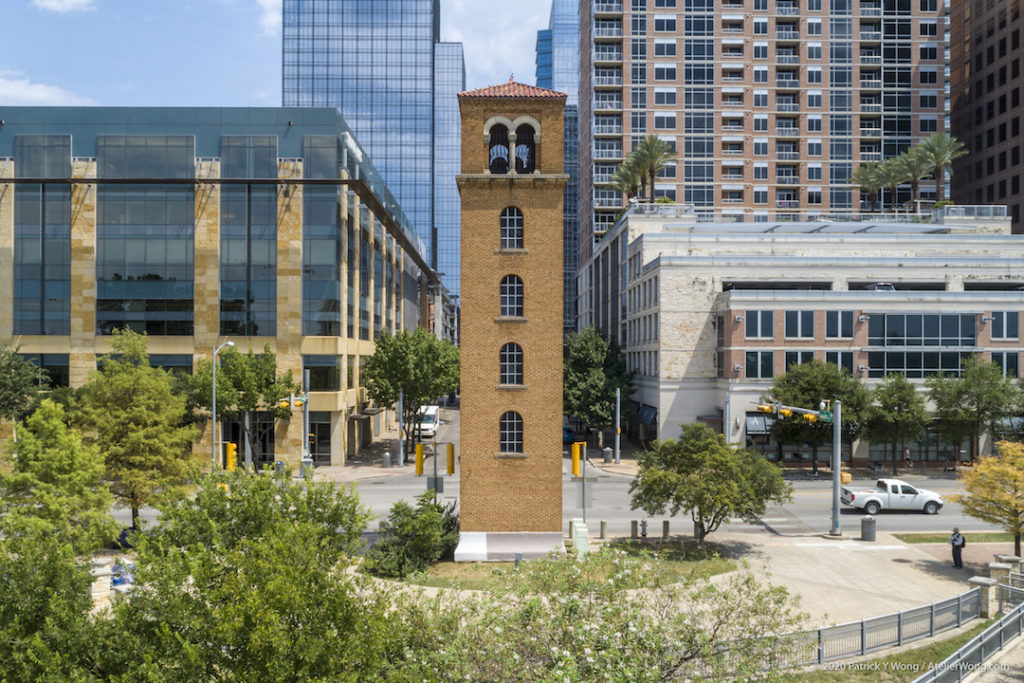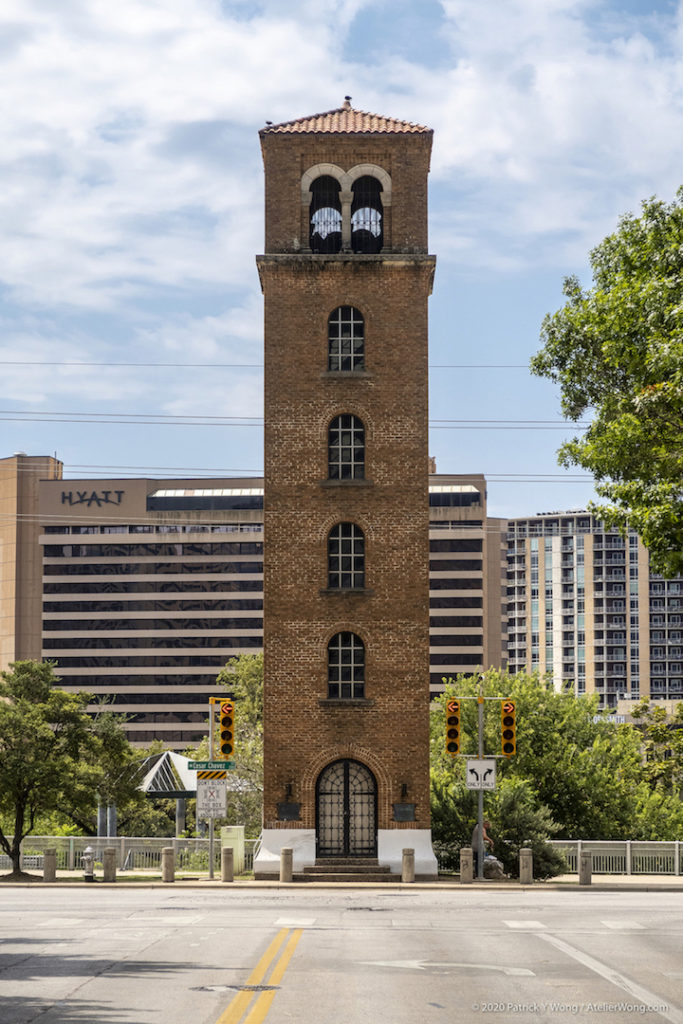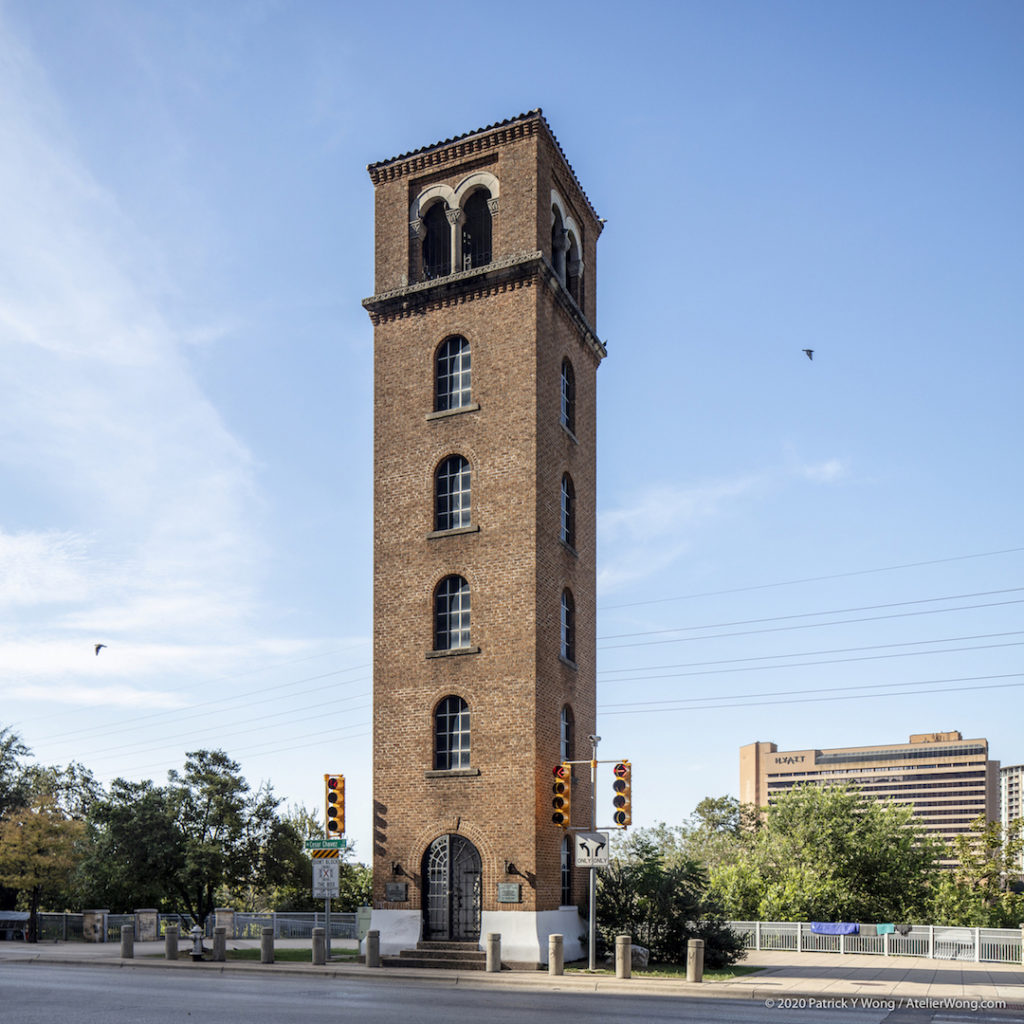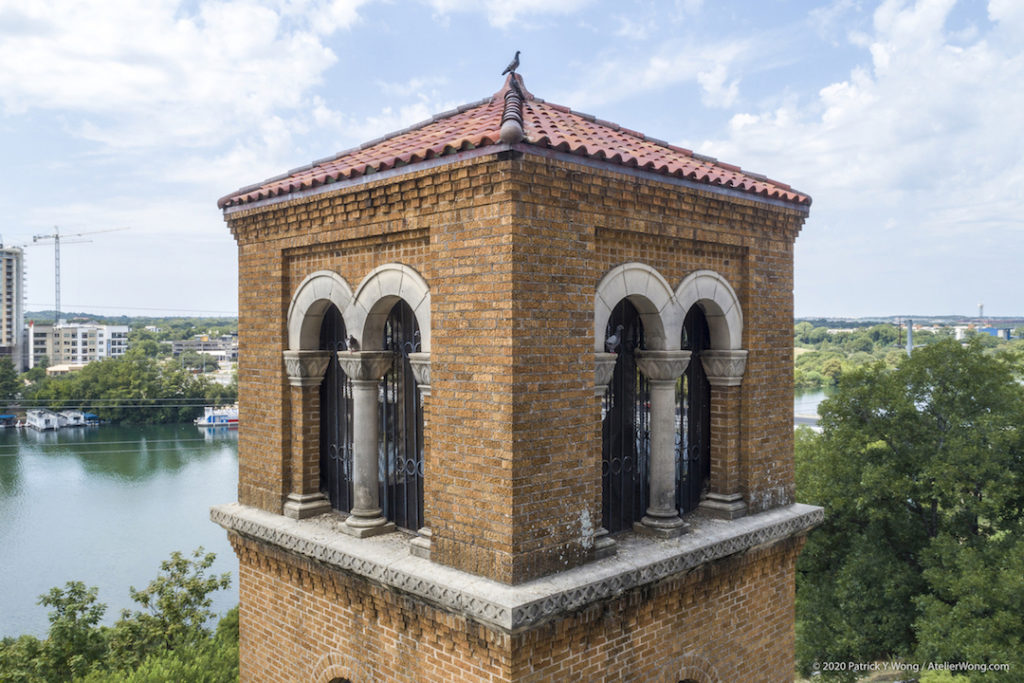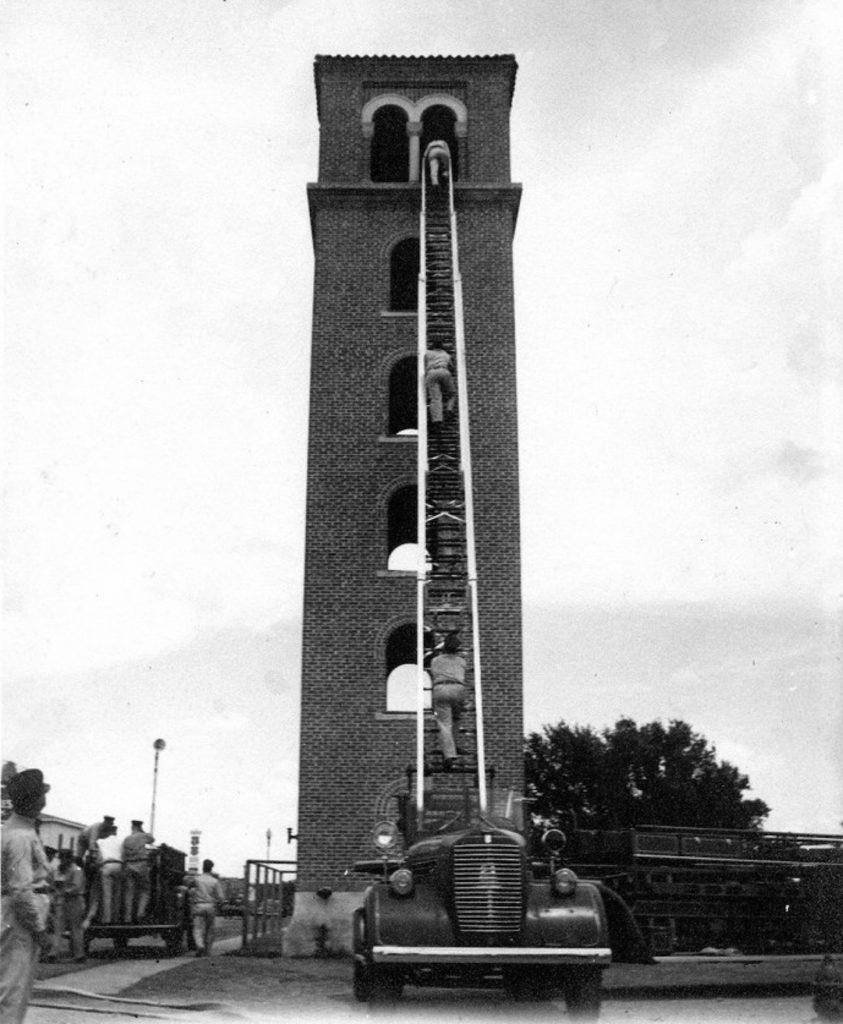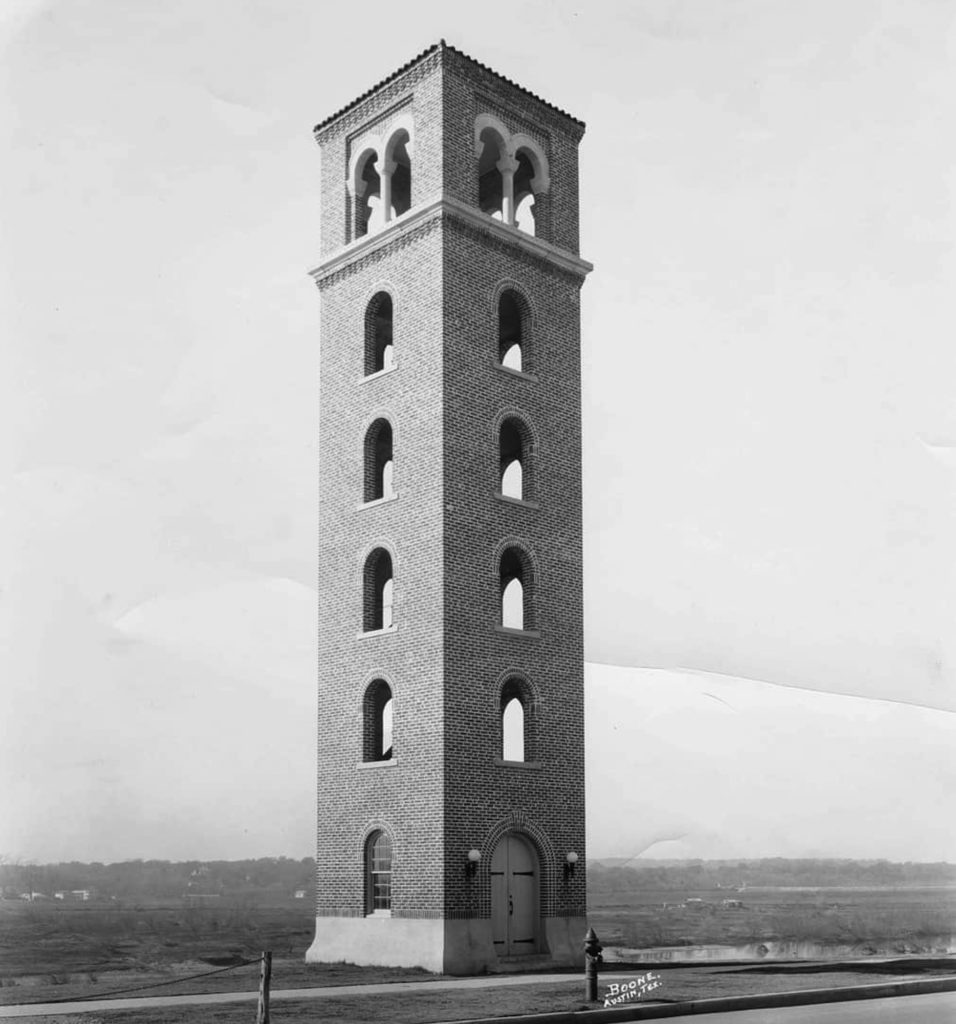As you stroll along the Ann and Roy Butler Hike-and-Bike Trail, you may hear the Kitchens Memorial Chimes tolling from Buford Tower. For decades, the tower was used by the city’s firefighters for training exercises. Today, the tower serves as a memorial to the city’s first responders, as well as a quaint reminder of a time when a six-story building would have dominated Austin’s skyline.
Shortly after Austin’s municipal fire department was created in 1916, it became clear that the city was on the rise—metaphorically and literally. Recognizing the need to practice extinguishing fires in taller buildings, the city authorized construction of a drill tower on the shores of the Colorado River. The location provided quick access to river water, and was far removed (at the time) from surrounding structures. The tower was also used for public demonstrations and fire department ceremonies.
For over four decades, this Italianate Revival structure was repeatedly burned, flooded, and scaled by local firefighters. Despite its utilitarian function, the tower was designed to be a beautiful standalone object, and its handsome red brick façade served as a visual landmark at the end of Colorado Street. This emphasis was a nod to the City Beautiful Movement: inspired by the vision of harmonious urban planning at the 1893 World Columbian Exposition in Chicago, cities across the country renewed their emphasis on beauty and grandeur.
But after decades of abuse, the tower had become an ugly duckling. In 1974 the structure was decommissioned as encroaching development made it unsafe for fire drills; its empty arches became a glorified pigeon roost and it was slated for demolition. In 1978, activists led by Effie Kitchens (the widow of the tower’s builder) argued that the tower was an important landmark. With the Austin chapter of the National Association of Women in Construction, Kitchens raised funds to renovate the tower as part of the group’s improvements along the city’s new trail (including the gazebo on the opposite shore). The women cleaned the brick, replaced the roof, installed glass in the arches, added decorative metal screens at ground level, and installed a system of electronic bells.
On August 23, 1978, the structure was rededicated in honor of Austin firefighter Captain James L. Buford, who was killed during a flood rescue operation in 1972. Since then the bells have tolled at regular intervals throughout the day, their chimes serving as a reminder of the tower’s storied past. – Bud Franck

